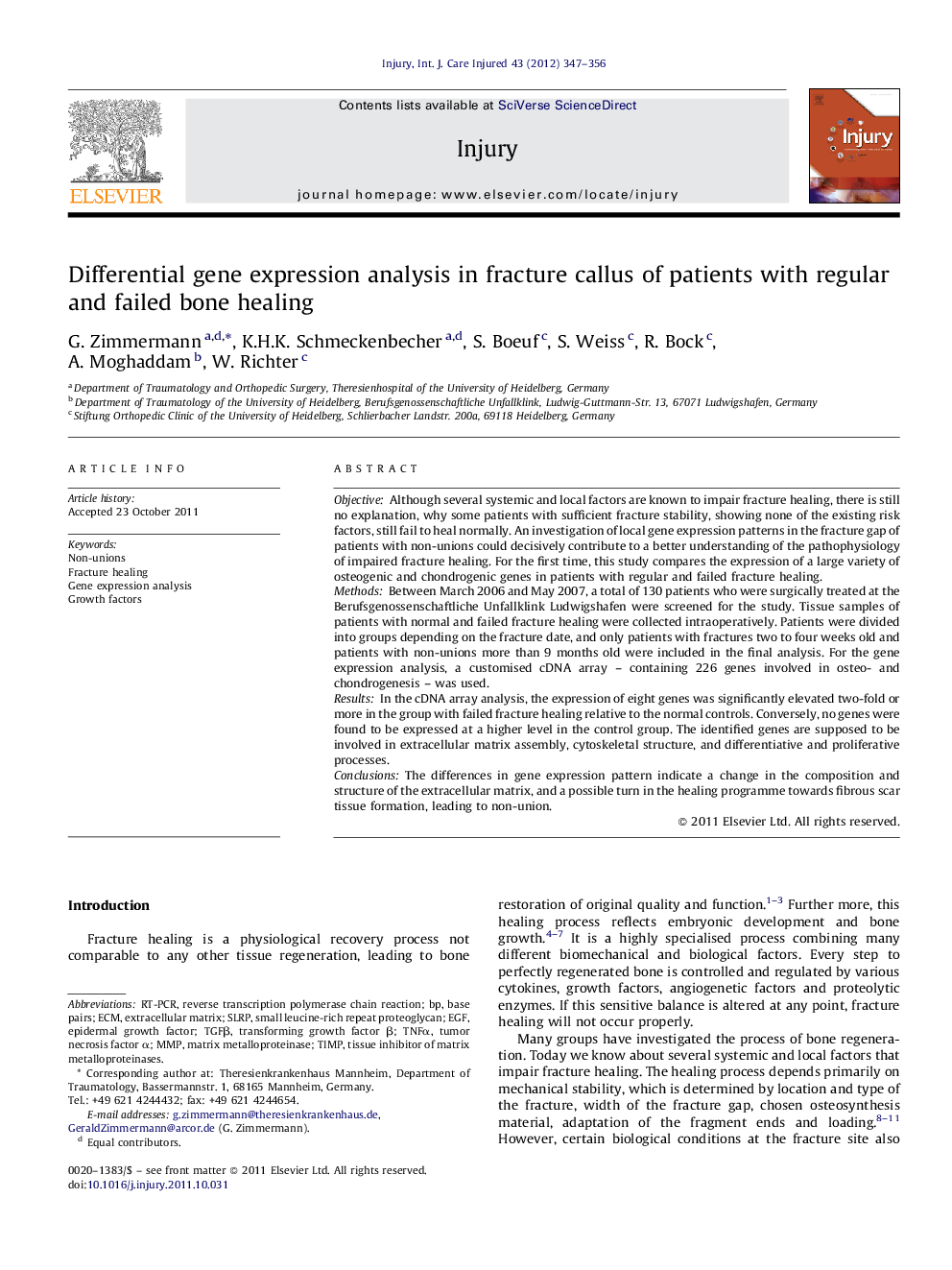| Article ID | Journal | Published Year | Pages | File Type |
|---|---|---|---|---|
| 3240760 | Injury | 2012 | 10 Pages |
ObjectiveAlthough several systemic and local factors are known to impair fracture healing, there is still no explanation, why some patients with sufficient fracture stability, showing none of the existing risk factors, still fail to heal normally. An investigation of local gene expression patterns in the fracture gap of patients with non-unions could decisively contribute to a better understanding of the pathophysiology of impaired fracture healing. For the first time, this study compares the expression of a large variety of osteogenic and chondrogenic genes in patients with regular and failed fracture healing.MethodsBetween March 2006 and May 2007, a total of 130 patients who were surgically treated at the Berufsgenossenschaftliche Unfallklink Ludwigshafen were screened for the study. Tissue samples of patients with normal and failed fracture healing were collected intraoperatively. Patients were divided into groups depending on the fracture date, and only patients with fractures two to four weeks old and patients with non-unions more than 9 months old were included in the final analysis. For the gene expression analysis, a customised cDNA array – containing 226 genes involved in osteo- and chondrogenesis – was used.ResultsIn the cDNA array analysis, the expression of eight genes was significantly elevated two-fold or more in the group with failed fracture healing relative to the normal controls. Conversely, no genes were found to be expressed at a higher level in the control group. The identified genes are supposed to be involved in extracellular matrix assembly, cytoskeletal structure, and differentiative and proliferative processes.ConclusionsThe differences in gene expression pattern indicate a change in the composition and structure of the extracellular matrix, and a possible turn in the healing programme towards fibrous scar tissue formation, leading to non-union.
